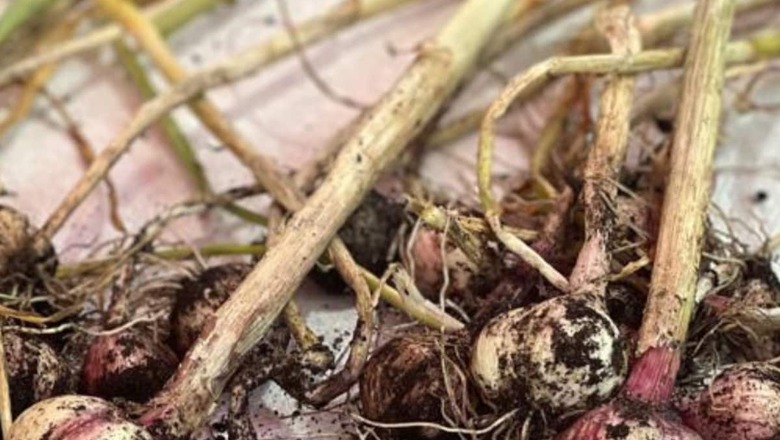
views
Growing garlic, however, is every bit as easy as growing daffodils. There are just a few things to know before you plant it:
There are two types of garlic — hard necks and soft necks. Plant the type best suited for your climate.
Hardneck varieties are recommended for northern regions, where they should be planted 6-8 weeks before a hard frost. Their heads are comprised of a single row of large cloves formed around an underground stem. They are more flavorful than soft necks but don’t store as long.
Top Showsha Video
Softneck varieties are better suited for growing in warmer climates, and their heads contain several stacked rows of smaller cloves. Due to their longer shelf life, soft necks are typically sold in supermarkets.
Garlic plants are heavy feeders, so incorporate a generous amount of compost into the top 3-4 inches of soil to increase its fertility. Include a helping of mycorrhizae fungus to boost bulb formation.
Plant only seed garlic purchased from a reputable supplier – or cloves from the largest, healthiest heads saved from last year’s harvest.
Supermarket garlic should not be planted because it is often treated with growth inhibitors to prevent sprouting at the store and in your refrigerator. It also may not be the type best suited for your growing conditions.
Separate the head into individual cloves without removing their papery skins. Plant the cloves, pointy end up, about 2 inches deep and 6 inches apart in rows spaced 12 inches apart.
Cover with soil, tamp it down and water well.
In regions where winter temperatures drop below 40 degrees, mulch the bed heavily with seed-free straw. Avoid using hay, which contains grass or grain seeds and is likely to turn your bed into a weedy mess. Water the straw to settle it into place.
It’s normal for plants to sprout during autumn and early winter, even in northern climates; leave them be.
Remove the mulch in spring, after the danger of frost has passed, and sprinkle a line of pelleted fertilizer or blood meal alongside each row, a few inches from stems. Keep the bed free of weeds, which may outcompete your crop for soil nutrients.
Hardneck varieties will send up tall, leafless stems called scapes in late spring. Remove them to allow the plant to focus its energy on underground bulb formation. The mildly garlic-flavoured scapes are a seasonal delicacy that can be added to salads, cooked in soups or sautéed with other vegetables.
Softneck garlic varieties do not produce scapes.
Your garlic will be ready to harvest in mid-to-late summer when at least 50% of the plant has turned yellow. Rather than pull the bulbs, which would risk damaging them, carefully dig them out and brush off the soil, but don’t rinse them.
Set hard neck varieties with their stems attached on a drying rack or screen, then place them in a well-ventilated, cool, dry spot for two weeks. Stems of soft neck varieties can be braided and hung to dry. The cured garlic’s papery skin will help extend its shelf life.
Store bulbs in a cool, dry spot. Hardnecks will remain fresh for at least 3-6 months; soft necks will last up to 9 months.
Read all the Latest Lifestyle News and Breaking News here
















Comments
0 comment